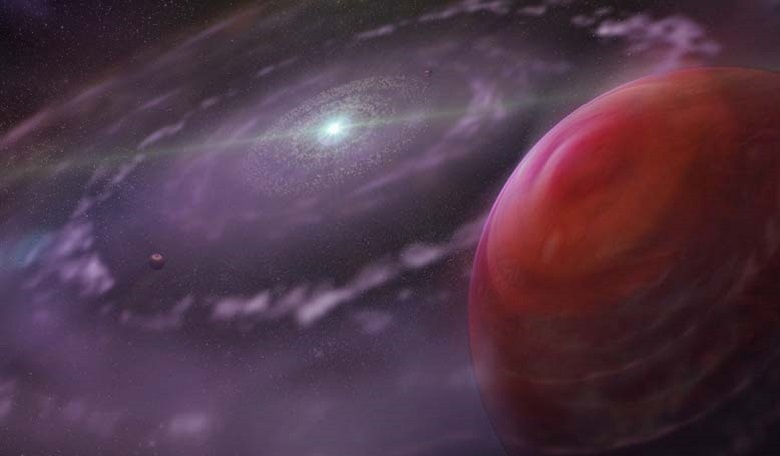From studies of extrasolar systems, it is apparent that planetary systems around other stars are as varied as the planets they contain and that no one system is like another. Nonetheless, more than half of the observed Sun-like stars in the solar neighbourhood have one or more super–Earth planets that orbit their host star within days to months - a feature that is lacking in our own Solar System. So, why isn’t Earth accompanied by a much larger neighbour?
Researchers at the University of Nevada, Las Vegas studying planet formation have suggested that the key to building super-Earths within orbits close to the central star is a ‘dead zone’, a region of low turbulence that may have sufficient material for planets to form in situ. The researchers also suggest that our Solar System could have been home to super-Earths as our system evolved, however, after using up all of the material close to the central star (super-Earths have masses in the range of 1 − 10 Earth masses) the planets simply migrated into the growing Sun and were lost.
It is suggested, that within our Solar System, planetesimals formed within a few million years of the birth of the Sun and while the giant planets were quick to evolve from material accreted from the gas disk, terrestrial planets formed long after the gas disk was dispersed, on a timescale of around 10 − 100 million years. It is also known that the composition of a planet is dependent on its formation location. Planets that form on the inside of the water snow line (the radial location from the star where the temperature is high enough for water to remain as a liquid) are most likely to be rocky bodies, while those that form beyond the snow line are not only water-rich, but will also be less dense. However, the timing of planet formation is also important, as accretion of gaseous material from the disk may significantly reduce the final average density of any evolving planet.
At present, there are two theories as to where super-Earths are formed. The first is that these planets, that could have an occurrence rate as high as 50% or more compared with hot Jupiters that in turn are only found around about 1% of stars, are formed in situ. Studies have shown this is possible if the amount of rocky material interior to 1 AU is about 50 − 100 Earth masses and if significant radial migration of solid material occurs before the end stages of planet formation.
The alternative super–Earth formation theory suggests that planets grow through Earth size embryo– embryo collisions and form farther out in the disk where there is more solid material available. These planets then migrate inwards and stay put, whereas hot super–Earths and giant planet cores formed in the same way become massive enough for the direction of the migration to reverse.
As the characteristics of observed close–in super–Earths exhibit a wide range of densities, it has led some to suggest that several different mechanisms could be at work to explain super-Earth formation. Accordingly, to try and understand which theory is more likely, Rebecca Martin and Mario Livio have created gas disk models to assess how the level of turbulence in a protoplanetary disk affects the formation locations for these type of planets.
Martin and Livio state that it is generally accepted that protoplanetary disks are not fully turbulent, but rather they contain a region of low turbulence, a dead zone and that the dead zone acts like a plug to slow down or stop material from falling into the star. Consequently planet-building material instead accumulates in this zone and may become massive enough to become self–gravitating.
For the dead zone to last the entire lifetime of the disk it requires the active layer surface density to be sufficiently small. The active layers are disk surface layers that are driven by magneto–rotational instability (MRI) and are therefore more turbulent. With a lower active layer surface density, there is sufficient material to form super–Earths in situ in the later evolutionary stages of the disk, whereas for fully turbulent disks a lack of material hinders formation. In this case, the only possible formation mechanism involves migration from farther out in the disk.
Martin and Livio conclude that if the active layer surface density is too large, the disk becomes fully turbulent before there is sufficient time to form the super–Earths. Migration of super–Earths through a dead zone is very slow and thus formation farther out in a disk with a dead zone is more difficult. Therefore, with the aid of a dead-zone, super-Earth formation in situ is possible as this region can provide all the required material necessary to build bigger planets close in to the central star. As such the team also suggest that the observed large range in super–Earth compositions may be the result of these two very different formation locations, driven by the inclusion or absence of a dead zone.
More on this research can be found at http://arxiv.org/pdf/1603.08145.pdf











